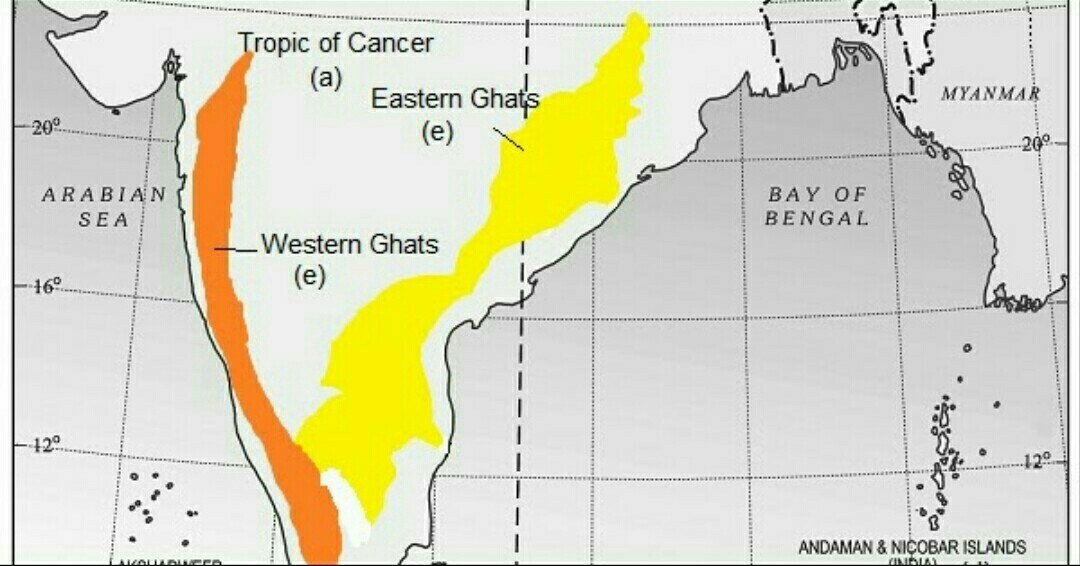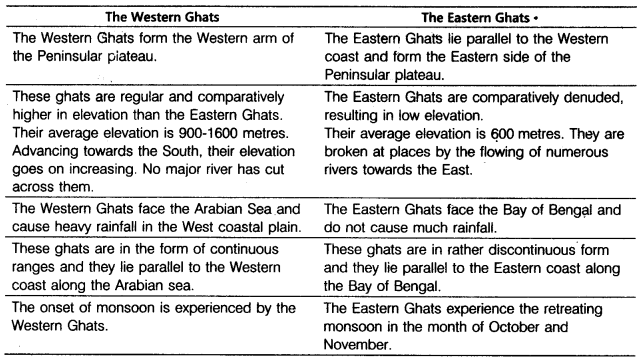WESTERN GHATS AND EASTERN GHATS
Western Ghats
The Western Ghats are also known as Sahyadri in certain parts of India.
They run parallel to the western coast of India.
They are continuous without any major breaks.
However, the western ghats do have passes such as the Bhor ghat, Pal ghat, and Thal ghat which makes it possible to travel through the western ghats despite the fact that they are continuous.
Although most of the peninsular rivers drain into the Bay of Bengal, their origin point is the western ghats.
Important rivers such as the Tungabhadra, the Krishna, the Godavari have their origin point in the western ghats.
It must be noted that the western ghats of India play a very important role in the distribution of the monsoon rainfall on the western border of India.
It causes the orographic rainfall due to which the windward side of the mountains receives a lot of rainfall, however, the leeward side remains dry.
The western ghats consist of evergreen forests too, however, the main crop grown there is the Coffee.
Anaimudi is the highest peak of the peninsular plateau and is located on the Anaimalai Hills of the Western Ghats.
Ecological sensitive zone
Known as Ecological hotspot
Its height decreases till goa and then again increases
The highest peak in the Western Ghats is Anaimudi and its elevation is 2695 meters or 8842 ft. It is known as Everest of South India. The name Anaimudi translates as Elephant’s head. It is located at the border of Ernakulam and Idukki District of Kerala.
Eastern Ghats
The eastern ghats run parallel to the eastern coastal plains of India.
Unlike the western ghats, they are discontinuous in nature and is dissected by the rivers that drain into the Bay of Bengal. As discussed above, most of these rivers have their origin in the western ghats.
It must be noted that the eastern ghats are lower in elevation than the western ghats.
The highest peak of Eastern Ghats is the Jindhagada peak (1690 meters). It is also known as Arma Konda or Sitamma Konda.
The difference in the elevation levels of the highest peaks in both the ghats can also be compared. Jindaghara of eastern ghats is of 1690 mts. This gives us a fair idea of the differences in elevation levels of the hills in both the ghats.
The main crop produced in the eastern ghats is Rice, which is also the staple food of the people living in the region.
Predominant rocks are Khondalites and Charnokites
Nallamala and palkonda hills are composed of cuddapah and kurnool rocks
DIFFERENCE BETWEEN WESTERN GHAT AND EASTERN GHAT











0 Comments